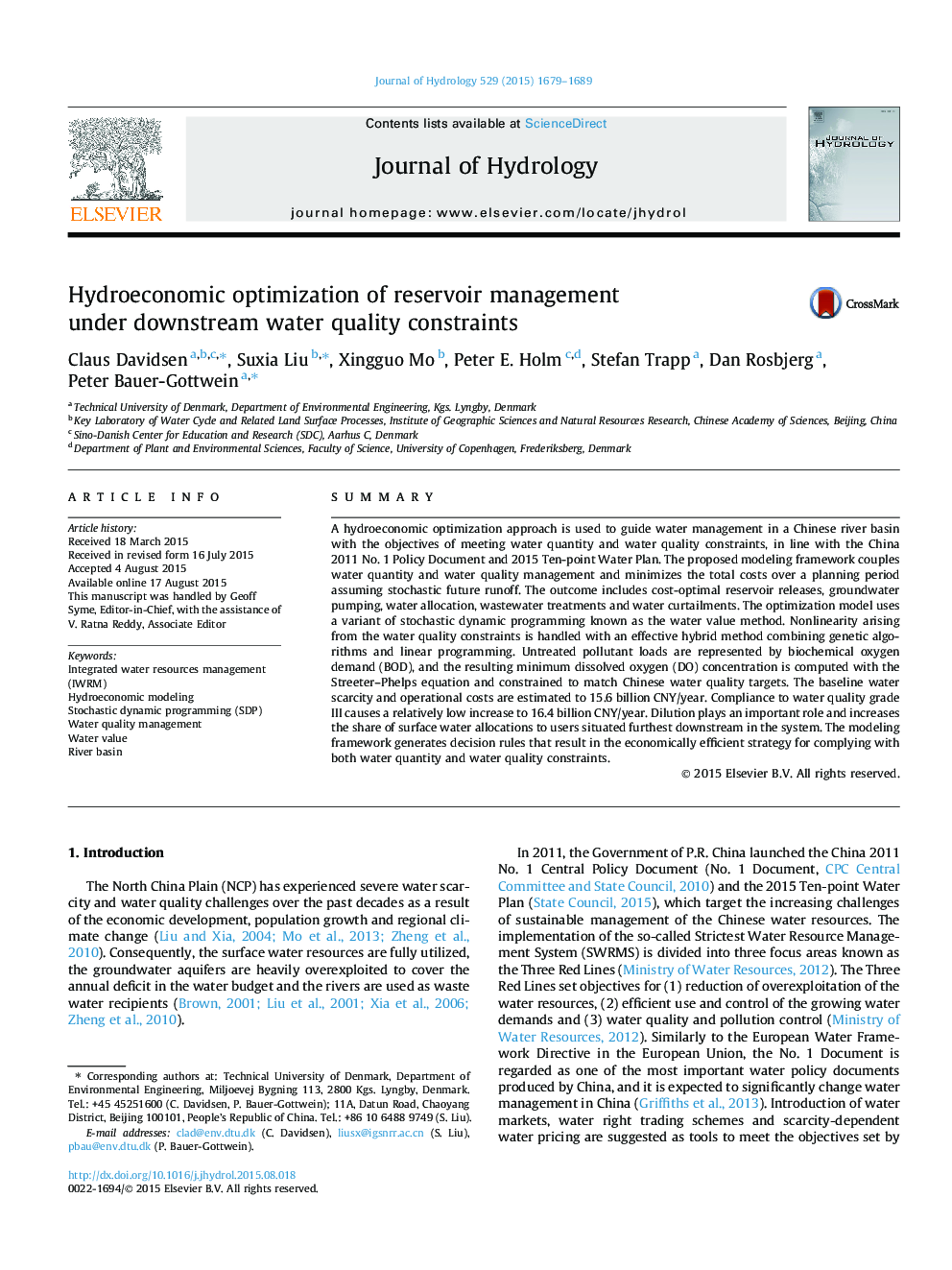| Article ID | Journal | Published Year | Pages | File Type |
|---|---|---|---|---|
| 6410829 | Journal of Hydrology | 2015 | 11 Pages |
â¢We jointly optimize water resources and water quality management.â¢Treatment and scarcity costs are minimized under given water quality constraints.â¢The modeling framework was applied to the Ziya River Basin on the North China Plain.â¢Water quality constraints significantly change the optimal management.â¢A proposed approach to operationalize the China 2011 No. 1 Central Policy Document.
SummaryA hydroeconomic optimization approach is used to guide water management in a Chinese river basin with the objectives of meeting water quantity and water quality constraints, in line with the China 2011 No. 1 Policy Document and 2015 Ten-point Water Plan. The proposed modeling framework couples water quantity and water quality management and minimizes the total costs over a planning period assuming stochastic future runoff. The outcome includes cost-optimal reservoir releases, groundwater pumping, water allocation, wastewater treatments and water curtailments. The optimization model uses a variant of stochastic dynamic programming known as the water value method. Nonlinearity arising from the water quality constraints is handled with an effective hybrid method combining genetic algorithms and linear programming. Untreated pollutant loads are represented by biochemical oxygen demand (BOD), and the resulting minimum dissolved oxygen (DO) concentration is computed with the Streeter-Phelps equation and constrained to match Chinese water quality targets. The baseline water scarcity and operational costs are estimated to 15.6 billion CNY/year. Compliance to water quality grade III causes a relatively low increase to 16.4 billion CNY/year. Dilution plays an important role and increases the share of surface water allocations to users situated furthest downstream in the system. The modeling framework generates decision rules that result in the economically efficient strategy for complying with both water quantity and water quality constraints.
